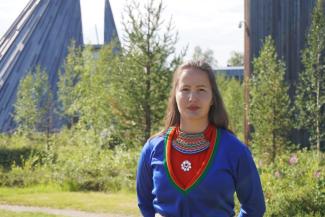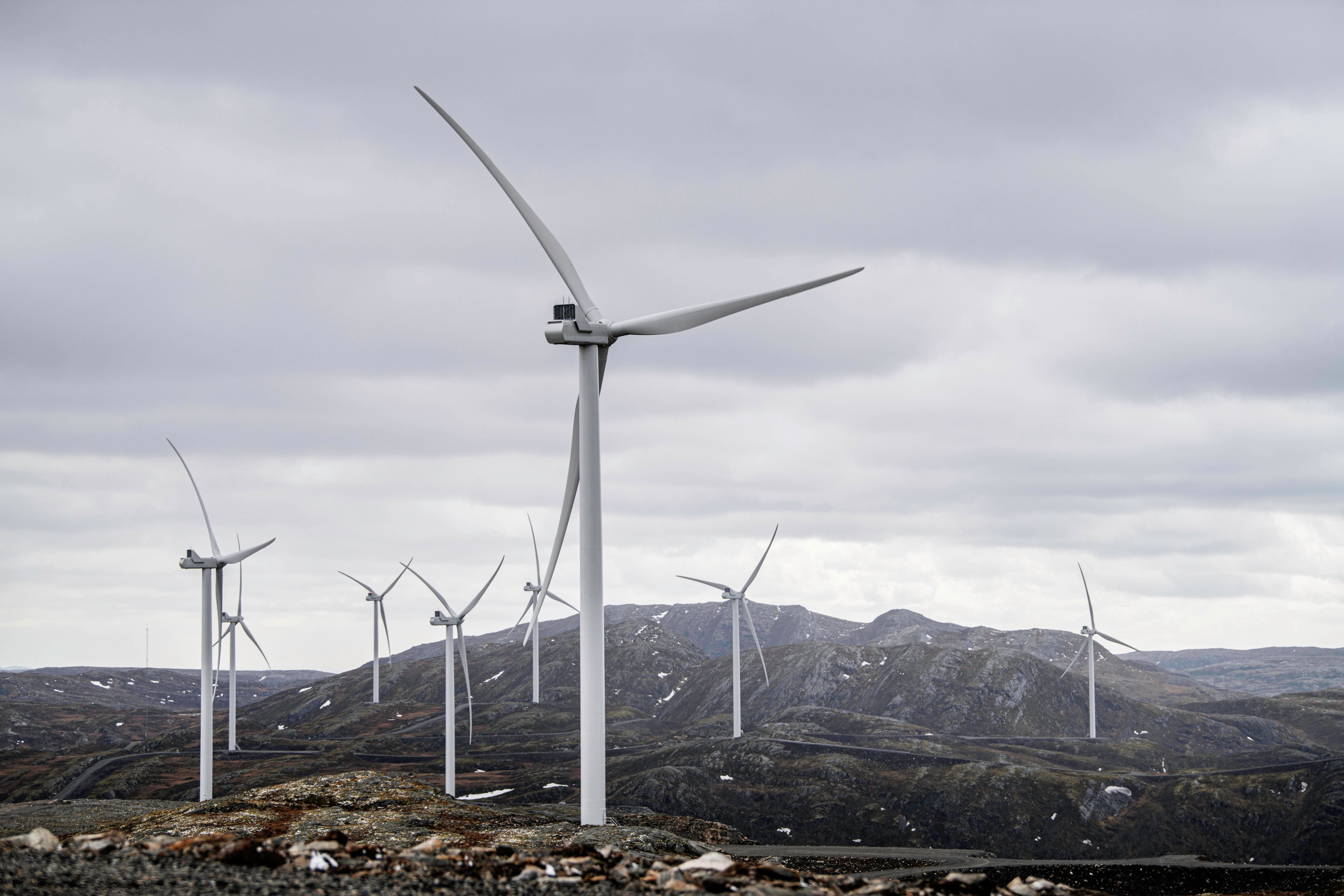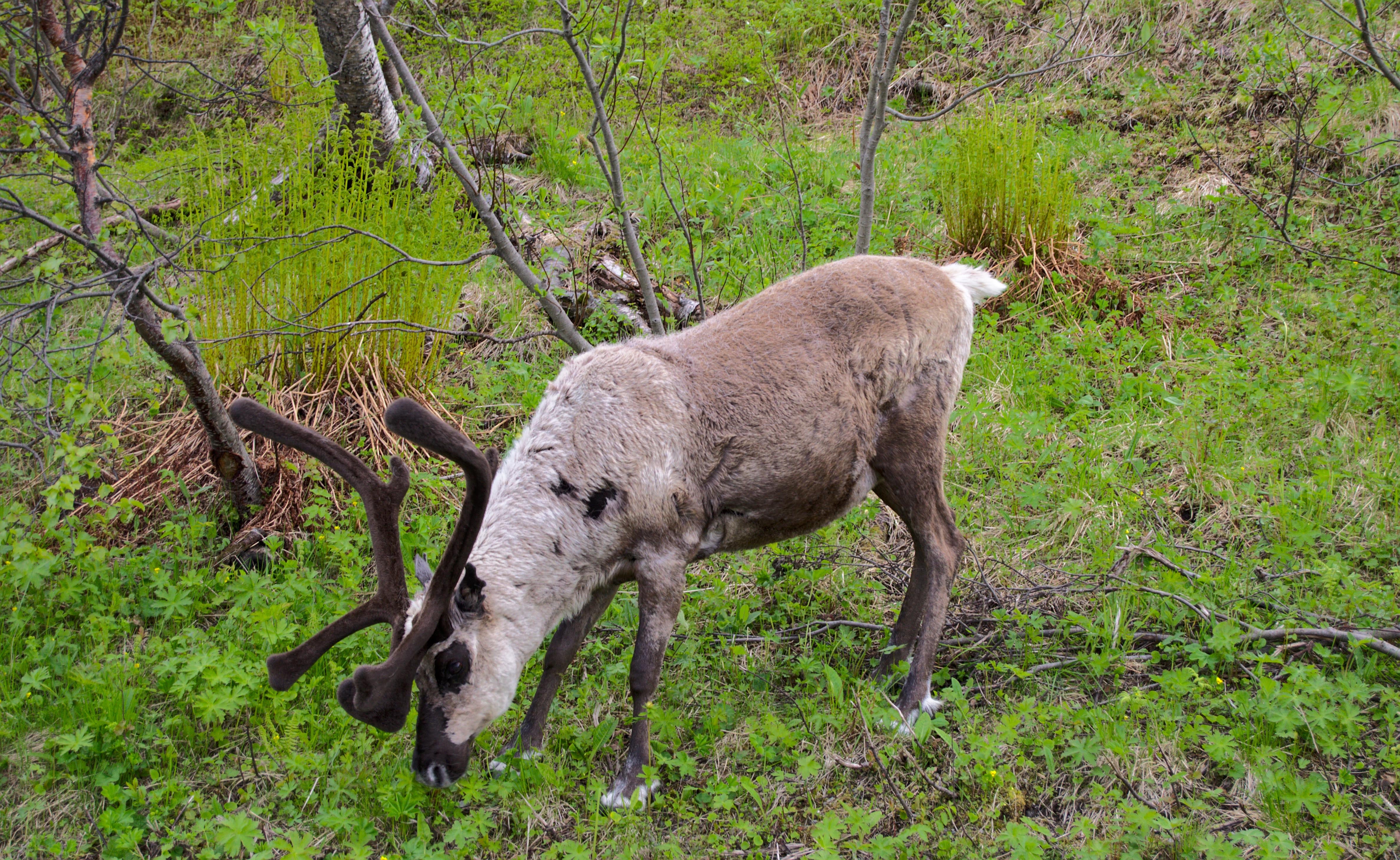
Maja Kristine Jåma (Sámi) is a reindeer herder in Fovsen-Njaarke Sijte, and, as of last September, a politician. She is currently an elected member of the Sámediggi (the Sámi Parliament in Norway) and one of five members of the Governing Council. “I have always been engaged in issues regarding Sámi society,” she says. “I had a vision of trying to do something to maintain and develop our language and culture. I was raised in a reindeer herding district in a reindeer herding family, and I’m also a South Sámi teacher. As a youth, I decided to engage in Nøørjen Saemiej Rijhkesiebrie (NSR), the largest political party in the Sámi Parliament in Norway. I wanted to participate in politics.”
Jåma’s work concerns the real impact of wind farms, popularly considered a form of green energy, on Sámi communities. The Sámi represent just over one percent of Norway’s total population of approximately 4.7 million. Jåma says that the wind farms have been scaled up in recent years, with some large-scale developments of turbines 200 meters high. “These are being set up in the mountains in herding areas and occupying land that is used for traditional Sámi livelihoods,” Jåma says. “This is completely new construction in places where only nature existed before.”
She continues, “These places are becoming more industrial. Our land is strongly affected by hydropower developments as well. [In both cases] they are occupying land and hindering us from living our traditional lifeways. For those of us who experience loss of land because of this so-called ‘green energy,’ it is actually nothing more than green colonization. We are forced from our land because of something that the States think is green energy. There’s nothing green about overstepping Indigenous rights and destroying nature.”

Reindeer are strongly affected by large scale wind turbines and avoid areas where they stand. Roan Wind Farm. Photo by Statkraft.
Low-carbon power depends on climate-devastating transition metals such as lithium, copper, nickel, and cobalt. Solar panels require large amounts of aluminum, silver, and tin, while alloys for wind turbines demand high quantities of nickel. These metals are carbon culprits because they are produced in large amounts by energy intensive extracting and refining processes, and are predominantly located on Indigenous lands. Sámi communities have been vocal about such “green washing” practices and accompanying rights violations. According to Jåma, “There have been many protests and resistance is huge. People have been resistant since this was new 20 years ago and have been trying to tell the consequences of these developments and to raise their voice, both as regular human beings but also through organizations and the Sámi Parliament. But somehow our concerns have not been taken seriously or respected. We are lucky to be able to raise our voices and our concerns [now],” she says.
In a historic verdict in October 2021, Norway’s Supreme Court ruled that two wind farms erected on the Fosen peninsula in western Norway violated the rights of Sámi families, including the Jåmas, to practice their culture, breaching the UN’s International Covenant on Civil and Political Rights. The Storheia and Roan wind farms make up Europe’s biggest land-based wind park with a capacity to supply energy to more than 170,000 households. According to Fosen Vind, Storheia and Roan accounted for more than 20 percent of the wind energy produced in Norway in 2020. The 11 Supreme Court judges unanimously ruled that the operating permits and authorizations that allowed for the construction of 151 wind turbines were invalid. However, nothing was decided about what should happen to the structures that had already been erected.

Reindeer grazing on lichen. Photo by Denis Simonet.
Jåma says this issue is the main reason she got into politics. “This is my homeland and this is where we have been living with reindeer and herding for centuries. It is clear that these two wind farms are occupying grazing land for the reindeers, so they are violating our right to practice our culture. We have tried from the very beginning to prevent this construction because it was going to violate our human rights. We have been fighting Fosen, the State-owned wind power company. We had a lot of losses in the court system, but at the Norway Supreme Court, we actually won. The sad part is that these wind farms are [already] built and are [still] producing power even though the Supreme Court has upheld that they violate our rights.”
The scale of the energy produced by the turbines is overwhelming, according to Jåma. “Reindeer are strongly affected by it and they avoid areas where these turbines stand. Our family territories do not have room for these big constructions. We have lost so much land already.” Reindeer are nomadic and roam based on the season to find lichen, their main source of food. Wind turbines affect these migration patterns as they are noisy and constantly in motion. Reindeer herders want the turbines fully dismantled and land to be restored, replanted, and returned to the Sámi.
“A Just Transition cannot happen as long as human rights and Indigenous rights are being violated. That’s a core issue. You can’t have this transition if reindeer herding or other ways of traditional living such as berry picking and food gathering in the wild are affected,” Jåma says. She notes that climate change is also significantly disrupting Sámi lifeways. “You can link this to climate justice since the Sápmi land and the Arctic experience the consequences of climate change. The weather and seasons are switching so fast and our winters are so unstable.”
Action rooted in Indigenous values and Traditional Knowledge is the only path forward to regaining balance in the world. Jåma says, “The way that some people have [traditionally] lived with nature, never taking more than you need and respecting the land, will benefit everyone. Indigenous Peoples have been stewarding the land for generations, and that should be something that States and society acknowledge. They should use this kind of thinking when looking at the resources that we have in nature.”
She continues, “We are talking too little about how to make changes in our everyday life, examining what you use and how much. People often buy too much of things they don’t need. How can we reuse more? Also, foraging and picking berries and other plants from the outside—this is integrated into our life, but in a busy world many forget it. This is a fight for the future of our ancestral livelihoods and for our land that is so strongly connected to our culture and language. While we have [similar] fights all over [the world], we are united and we share the same goal: for our future generations not having to stand in these fights. We must preserve the land for them to be able to maintain our livelihood and culture. What we do today will affect future generations.”
Top photo: Maja Kristine Jåma. Photo by Sámediggi.
